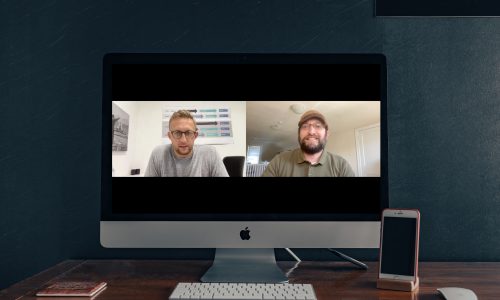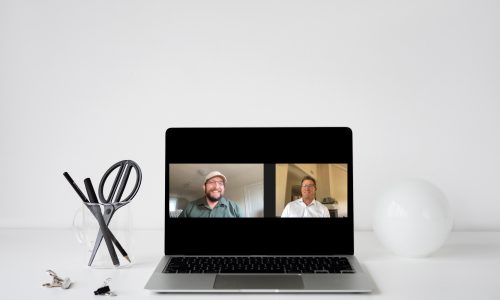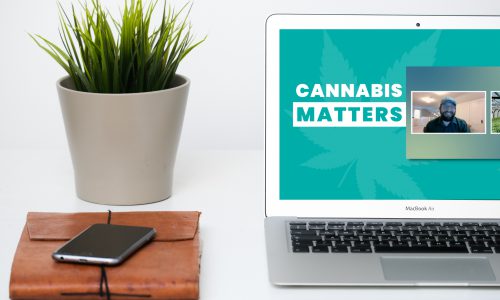One of the more recent states to legalize the recreational use of cannabis in 2022, Missouri is often considered a leader in the Midwest when it comes to the medicinal use of the plant. Medical use was legalized in 2018.
At the forefront of the medical use market, BeLeaf Medical is a leader in the state of Missouri. Vertically integrated with years of experience in several states, BeLeaf provides consistent quality natural plant-based therapies through its handful of brands like SWADE, SINSE, and PHYTOS.
We caught up with BeLeaf Medical’s Chief Executive Officer Jason Nelson to learn more about the company, how he approaches hiring, and more.
Watch our exclusive interview and read highlights from the conversation below (edited for clarity).
The evolution of BeLeaf
BeLeaf was born in 2016. So back in 2016, a CBD hemp program was launched here in Missouri. BeLeaf pulled one of those licenses and that was along the time that everybody had high hopes and prospects for hemp CBD.
It also and most notably gave BeLeaf an early indication that if it could get a medical cannabis program in Missouri via ballot initiative around 2018-19, then BeLeaf was well positioned to apply for those licenses and so they did. They applied for retail wholesale production as well as ultimately transportation.
Perhaps being a participant in that initial CBD hemp program gave them a favorable look at their applications and so we were awarded as a vertically integrated single-state operator. I now have five retail licenses under my SWADE brand, I have three production licenses which produces my Sinse and my CuCo brands, and my Amend medical-focused brands. Around the time that I joined the company a year ago, were awarded a transportation license as well.
Missouri’s progress toward legalization and growth
It’s an interesting case study in each one of these markets. We had midwest programs for Illinois for example that were able to go to adult-use starting in 2020 but in each one of these iterations, there’s slight differentiation.
What we found in Missouri, I believe, that this is the closest market we’ve ever seen pivot from a relatively well and even considerably over-produced medical market where you have more than 60 producers, 30 edibles brands for example, 200 plus retail licenses that were operating prior to the adult-use pivot and that’s unique.
On matching your talent strategy with your growth strategy
My fortunate experience has been able to leverage cultural competency when it comes to not only maintaining a cannabis business relationship with its employees, but then scaling it. So there are two different components there. If you’re doing what you’re doing well, then how do you take that relationship and go through a three to four X, or a four to five X, or five to ten X increase in a corporate business relationship? Having cut my teeth at a place like Cresco Labs, it certainly helped me with what to do — more notably, unfortunately, with what not to do — and how to manage your staff.
Retention is key. The key thing about retention is that every cannabis firm has a set of very dedicated individuals who are committed to its success and in any of those populations of individuals, you have their strengths and their weaknesses. You have things that they’re good at and things that they probably need some support to improve on. So it’s important to have a road map associated with how to manage those.
One way to do that is to build on strengths — that’s first and foremost. Leverage what people are good at. Approach doing what you’re currently doing without making mistakes that hamper responsible growth and then, two as you’re taking that and scaling it up, there’s a whole other set of criteria and/or mistakes to not make so to speak that it’s just been a fortunate relationship for me to have built, learned from, and then now to your point have married with BeLeaf at the time that they needed it.
How to balance legacy talent with those who can help scale the business
It’s a million-dollar question.
First and foremost, talent retention and or experiential retention still maintains as a premium in cannabis. Certainly, your larger operators that have unfortunately gone through massive layoffs are running a very substantial liability of making similar mistakes that were made by the previous leadership and/or employees who are no longer with that company, so you really do have to approach your existing assets and resources with that liability being a big part of of their retention value.
You want to spend the energy on explaining where we currently are, where we need to take this, and then, if you’re empowering those individuals to welcome these new leadership teams across any of those business units that you mentioned, that’s the first part of the equation.
Then the more notable or important part of that equation is for any new executive mid-level manager or even entry-level employee at BeLeaf, is positioning them. You have your existing skill sets whether you come from cannabis or you don’t. We’re going to ask you to come in if you’re in a leadership position, you really need to split your energy half and half as a leader and a learner, so you’re going to be taking the knowledge and the value from these legacy employees who you want to continue to empower, at the same time of bringing in those abilities to scale in operation, for example, or increase product through those key things that really is required to grow. So, it’s a successful marriage.
A lot of times you’ll have a discipline that you’re coming from. You know what you know, you know your existing business models, and you can come in and make some really rapid assessments and ultimately changes to the operation that might seem intuitive from the discipline you’re coming from. But without the relationship of a strong foundation with your legacy employees, it doesn’t work.
The importance of providing legacy leadership with career pathing opportunities
A big piece of the legacy contributor conversation is showing them the upward mobility paths despite the fact of bringing in new leadership. You really have to have that conversation very directly with them because they’ve been investing with you this entire time.
Anybody who works in the cannabis industry will tell you that there’s a disproportionate relationship to the commitment required to have success in this space compared to I would say most any other industry. You certainly have industries that go through these consequential changes and or innovations that do really require a general extra degree of commitment and dealing with not only the federal illegality component of it, but the nascency from a state regulatory perspective that’s going to introduce stress, more so than most people are prepared to deal with.
So when you have this group of folks who’ve been paying that due for you, you need to say, listen here’s your path with BeLeaf, here’s your path with SINSE or SWADE, and then capitulate too, and say, listen at some point if I’m able to grow you within this company, I have to understand that your value to someone who is not as sophisticated as we are might be 20 more than the value is to me from a compensation package perspective, leadership title, all the things that that a legacy group certainly is vying for.
So if you can manage those conversations and really still provide paths for upward mobility within the company to your existing employees through the conduit of these new employees who are really going to bring in these models that allow us to scale that, not only say within Missouri, then you start to have the conversation like building a multi-state platform, which I’ve obviously been through before.
If you don’t have those conversations, your legacy folks become disenfranchised and feel that they’ve been upended and circumvented by a new leadership team restructure and then they don’t empower the new leadership team and structure to have success, so you just end up in this rotunda of not only losing your legacy employees who helped you build what it is but then just frustrating the new leadership component to ultimately underperform.
How are you leveraging data to really stay in front of and apprised of and ahead of consumer preferences and buying behaviors?
Cannabis at a state-by-state level, even in a market-by-market level has been very divorced from any type of unified data tracking platform. Of those who know, an ERP system typically manages a lot of those data elements that hasn’t existed in cannabis and in fact you’ve had some very large ERP platforms that are well funded, millions of dollars committed by MSOs to try to figure this out, ultimately to have that ERP system say that the cannabis production in it of itself is so complicated that I can take this one plant and turn it into this, this, this, depends on the potency or the yield, like all the things they go back and forth.
I’m the most optimistic I’ve ever been about taking what you consider now siloed pieces of data platforms and managing those into what functionally is an ERP system and starting typically, I tend to think about things as you’re starting with the plant itself right so as a wholesale producer I’m going to produce a milligram of THC in a plant form, there’s now a software package that I think is in the best position we’ve ever seen, call it third or fourth generation to actually take that particular relationship to your production outcomes then ultimately of that raw biomass, what it’s going to turn into, some costs associated with it, so your cog’s tracking those types of things, then backing into reorder triggers for pouches for packaging or for nutrients or any of the things that that particular wing and arm of what we do is managing and we’re excited about that.
On attracting Boomers to medicinal cannabis
Many Boomers have admitted that they find dispensaries too intimidating.
So then the question becomes: how do you get them engaged to understand the value of cannabis for either their lifestyle or their medical ailment? We have made some good progress in the last two years. Most everybody knows somebody who has been a medical cannabis patient who has taken benefit from medical cannabis or a next extension of it in an adult-use market.
I think you can approach an adult-use lifestyle style consumer with a low-dose product, something consistent. They’re obviously not going to be open to a vaporizer pen likely, they’re not going to roll up a pre-roll for example, but if you do have access to say a gel cap or a capsule-type product, which we do here in Missouri, I believe at a low dose, microdose that particular conversation is relatively easy to have. You have to get in front of them and have that conversation.
So it is an information seminar based on community building. Ultimately though, there’s no way I can design a dispensary that attracts that particular demographic. And you credit it too of just what they’ve experienced in their lifetimes. It was just fully weaponized, fully criminalized, fully stigmatized to the point where even if it is the most conducive relationship, they don’t really feel good about it.
There are definitely outliers. There are people in that generation who are more than comfortable to come see us but by the dollars percentage you’re right, it’s Gen Z through Gen X basically, then millennials are the ones who are coming to see us right now and to that end, we want to be able to welcome those customers with both products and access that speaks to them specifically.
Interested in learning more about the cannabis industry and how ForceBrands’ cannabis practice can help grow your business or career? Reach out to Eric Rosen to start the conversation.






